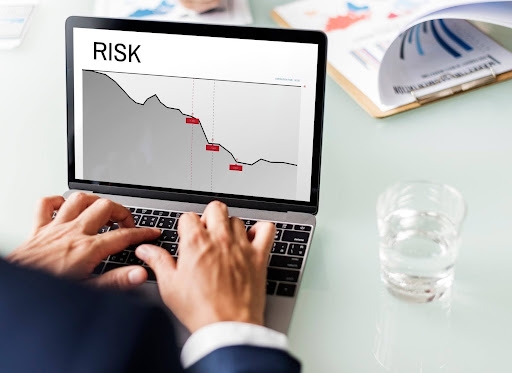

Ecommerce Payment Strategies for Maximizing Conversion Rates
Ecommerce payment systems are the backbone of online transactions, enabling businesses to accept digital payments securely and efficiently. From payment gateways to mobile wallets and Buy Now, Pay Later (BNPL) options, these systems ensure a smooth checkout experience for customers.
VELLIS NEWS
31 Mar 2025
By Vellis Team
Vellis Team
Automate your expense tracking with our advanced tools. Categorize your expenditures
Related Articles

Vellis News
1 April 2025
What Is a High-Risk Transaction?
Whether it’s conducting important international transactions, playing a fun game on a PC, or doing online shopping, every business wants and needs to enable safe and tangible transactions. However, certain businesses and industries are characterized as high-risk, hence they are prone to fraudulent activities, chargeback, and regulatory problems.

Vellis News
31 March 2025
Mastering Fee Negotiations: How to Get the Best Rates with a High-Risk Payments Processor
Finding the best rates with a high-risk payment processor can be challenging. High-risk merchant accounts often come with expensive payment processor fees, but with the right negotiation strategies, you can get high-risk payment solutions at a lower cost.

Vellis News
31 March 2025
How to Offer Multiple E-Commerce Payment Options for Increased Sales
In the ever-evolving world of e-commerce, offering multiple payment options is essential for businesses aiming to maximize sales and customer satisfaction. Consumers expect a seamless and secure checkout experience with choices that match their preferences, from credit cards and digital wallets to bank transfers and Buy Now, Pay Later (BNPL) services.
As technology evolves, integrating advanced security measures and optimizing payment flows have become essential for businesses looking to enhance customer satisfaction and drive sales.
This article explores the key components of ecommerce payment systems, the role of payment processors, popular payment methods, and strategies for optimizing transactions.
Key Takeaways
- Ecommerce payment processing enables businesses to accept digital payments securely, connecting shoppers with various payment methods such as credit cards, mobile wallets, and BNPL options.
- Payment gateways act as a bridge between customers and merchants, while processors verify and authorize transactions, ensuring funds are securely transferred.
- Businesses that provide diverse ecommerce payment methods cater to a wider audience, reducing cart abandonment and boosting customer satisfaction.
- Tokenization, PCI compliance, and AI-driven fraud detection help protect sensitive payment data, building trust and reducing fraudulent transactions.
- Simplifying payment flows, enabling guest checkout, and optimizing for mobile devices create a seamless shopping experience, leading to higher conversion rates.
Understanding Ecommerce Payment Systems
Ecommerce payment systems are the backbone of online shopping, enabling secure and efficient transactions between customers and businesses. These systems ensure smooth financial transactions by connecting shoppers’ payment methods to merchants’ accounts. The key players in this process include payment gateways and processors, which work together to authorize, verify, and complete transactions seamlessly.
How Payment Gateways and Processors Work Together
Payment gateways and processors form the core of ecommerce payment integration.
- Payment gateways act as the bridge between a customer and the merchant, securely capturing and transmitting payment details.
- Payment processors then step in to verify transactions, ensuring that funds are available and that the transaction meets security standards before approval.
Once a transaction is authorized, the processor coordinates the fund transfer between the customer’s bank and the merchant’s account, ensuring that payments are completed swiftly and securely. This collaboration ensures a seamless shopping experience and enhances trust in ecommerce payment solutions.
Popular Ecommerce Payment Methods
Today’s shoppers demand flexible and secure ecommerce payment options. Businesses must cater to these preferences to boost sales and customer satisfaction.
Credit and Debit Cards
Credit and debit cards remain the most widely used ecommerce payment methods. Consumers favor them due to their convenience, security, and broad acceptance. Major networks such as Visa, MasterCard, and American Express process billions of online transactions annually, making them essential for any ecommerce platform.
Mobile Payments
With smartphones dominating digital commerce, mobile payments are growing rapidly. Services like Apple Pay, Google Pay, and Samsung Pay allow users to complete transactions with a simple tap or facial recognition, offering both speed and security. Integrating mobile payments into your ecommerce payment system enhances user experience and improves conversion rates.
Buy Now, Pay Later (BNPL) Options
BNPL solutions, such as Afterpay, Klarna, and Affirm, allow customers to spread payments over time without interest. This model attracts budget-conscious shoppers and boosts sales by making purchases more accessible. Businesses that incorporate BNPL options into their ecommerce payment methods often see reduced cart abandonment rates and higher average order values.
Strategies for Optimizing Ecommerce Payments
Optimizing ecommerce payment systems improves customer satisfaction and increases revenue. Here’s how businesses can enhance their payment processes:
Offering Multiple Payment Options
Providing a variety of ecommerce payment methods ensures that customers can use their preferred option, whether it’s a credit card, digital wallet, or BNPL service. This flexibility helps businesses cater to diverse audiences, increasing conversions and reducing abandoned carts.
Ensuring a Secure Checkout Process
Security is paramount in ecommerce. Implementing encryption technologies such as SSL and adhering to PCI compliance standards safeguard customer data. Fraud detection tools and two-factor authentication also enhance protection, making transactions safer and boosting consumer trust in your ecommerce payment system.
Simplifying Payment Flows for Users
A complicated checkout process can drive customers away. To create a seamless experience:
- Minimize the number of steps required to complete a transaction.
- Offer guest checkout to eliminate registration barriers.
- Use autofill options for returning customers.
- Clearly display available ecommerce payment methods upfront.
- Optimize your checkout page for mobile users.
By streamlining payment flows, businesses can increase conversion rates and encourage repeat purchases.
The Role of Technology in Ecommerce Payments
Technology plays a critical role in improving ecommerce payment security, efficiency, and user experience. Tokenization replaces sensitive card details with a unique digital identifier, reducing the risk of fraud. Meanwhile, PCI compliance ensures that businesses follow security best practices to protect customer data. Adhering to these standards is essential for maintaining trust and reducing liability risks.
Additionally, artificial intelligence enhances fraud detection by analyzing transaction patterns in real-time. AI-powered systems flag suspicious activity, reducing chargebacks and protecting both businesses and customers from fraudulent transactions. Incorporating AI into ecommerce payment processing helps prevent unauthorized purchases and strengthens overall security.
Conclusion
Ecommerce payment systems are the backbone of online shopping, ensuring smooth, secure, and flexible transactions for both businesses and consumers. By leveraging the right ecommerce payment solutions, businesses can enhance customer satisfaction, improve security, and drive sales. Whether through offering multiple payment options, optimizing checkout processes, or utilizing AI for fraud prevention, a well-integrated ecommerce payment system is crucial for success in the digital marketplace.
FAQs
1. What is the role of a payment gateway in ecommerce payments?
A payment gateway acts as an intermediary between the merchant and the customer’s bank, securely transmitting payment data, verifying details, and authorizing transactions before processing funds.
2. How can businesses reduce fraud in ecommerce payment processing?
Businesses can implement security measures such as tokenization, AI-driven fraud detection, SSL encryption, and PCI compliance to protect customer data and prevent unauthorized transactions.
3. Why is it important to offer multiple ecommerce payment options?
Providing multiple payment methods caters to different customer preferences, increasing the likelihood of completed purchases, reducing cart abandonment rates, and boosting overall sales.

Ready to transform your financial management?
Sign up with Vellis today and unlock the full potential of your finances.
Related Articles

Vellis News
25 March 2025
What is Mobile Payment Processing?
Mobile payment processing lets people make payments using their mobile devices, changing how we handle money and ditching traditional payment methods.

Vellis News
31 March 2025
Ecommerce Payment Strategies for Maximizing Conversion Rates
Ecommerce payment systems are the backbone of online transactions, enabling businesses to accept digital payments securely and efficiently. From payment gateways to mobile wallets and Buy Now, Pay Later (BNPL) options, these systems ensure a smooth checkout experience for customers.

Vellis News
31 March 2025
Improve Digital Payments Experience Through Customer Feedback and Reviews
Enhancing payment experiences is crucial to high-risk payment processing. Through payment processor customer feedback, you will find out problems that you need to resolve to ensure smooth and secure transactions. This article will show you how to use reviews and feedback to make payments better.
We use cookies to improve your experience and ensure our website functions properly. You can manage your preferences below. For more information, please refer to our Privacy Policy.
© 2025 Vellis Inc.
Vellis Inc. is authorized as a Money Services Business by FINTRAC (Financial Transactions and Reports Analysis Centre of Canada) number M24204235. Vellis Inc. is a company registered in Canada, number 1000610768, headquartered at 30 Eglinton Avenue West, Mississauga, Ontario L5R3E7, Canada.
